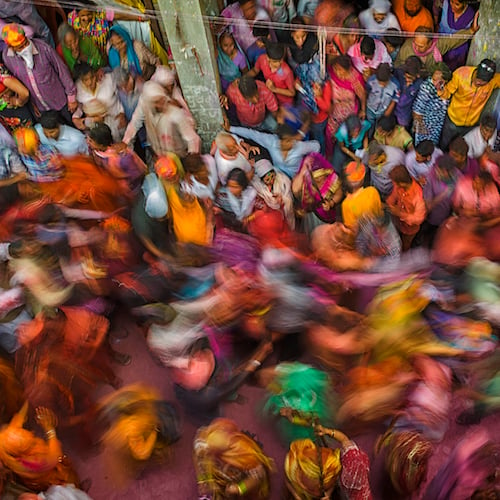North Korea: Country and Military by the Numbers
September 24, 2017 by Paul AusickLess than two weeks ago, the government of North Korea launched a ballistic missile that flew over the Japanese island of Hokkaido before falling into the ocean. Last week the Democratic People’s Republic of Korea (DPRK), the North’s official name, threatened to launch and explode a nuclear-tipped missile into the Pacific Ocean.
Whether the threat is credible depends on whether the DPRK is able to mount a miniaturized nuclear weapon on a missile, something that it has yet to prove and upon which observers’ opinions vary.
What is certain is that North Korean leader Kim Jong-un is willing to conduct a war of words with U.S. President Donald Trump. The verbal missiles fired between the two leaders last week were intercontinental and have stoked fears that the DPRK will take further action that Trump will consider provocative enough to require more than a tweeted response.
North Korea’s foreign minister, Ri Yong-ho, in New York for the meeting of the United Nations General Assembly, said last week of the threat to test a nuclear weapon:
It could be the most powerful detonation of an H-bomb in the Pacific. We have no idea about what actions could be taken as it will be ordered by leader Kim Jong-un.
One perhaps unexpected response to the North Korean threat was Saturday’s announcement that China will no longer buy North Korean textiles and will limit its exports of refined oil products to the DPRK to 2 million barrels a year beginning January 1. According the U.S. Energy Information Administration (EIA) China currently exports about 2.2 million barrels of refined products a year to North Korea.
Exports of crude oil are not included in the reduction, and crude oil represents a larger portion of China’s exports to the North Koreans. The EIA estimates China exports about 5.5 million barrels a year of crude oil to the DPRK.
The most recent sanctions, imposed shortly before the missile test two weeks ago, include a ban on textile exports from North Korea and a reduction of 30% in imports of oil. The goal is to starve the DPRK of both fuel and hard currency to fund its missile and nuclear weapons developments. China had not agreed either of the terms until Saturday.
An earlier UN Security Council resolution prohibited all exports of North Korean coal, iron, iron ore, lead, lead ore and seafood. The sanctions also included more restrictions on the country’s Foreign Trade bank and forbid North Korea from sending more workers abroad.
Economically, North Korea is one of the poorest countries in the world. Its population of about 25 million lives in extreme poverty, with annual estimated per capita income of $1,800, according to the CIA Factbook.
Because the DPRK’s economy is highly dependent on trade with China, China’s decision to support the new UN sanctions was seen as an important step in forcing North Korea to heel. About 75% of the country’s $4.15 billion in exports are sent to China and 76% of its $4.8 billion in imports come from China.
According to the CIA Factbook, North Korea is a source country for men, women and children who are subjected to forced labor and sex trafficking. Workers are not free to change jobs and “tens of thousands” of North Koreans, including children, are held in prison camps and subjected to forced, heavy labor.
In addition, the country sends tens of thousands of its citizens to both Russia and China where they work under near-slavery conditions and have most of their earnings confiscated by the DPRK, according to a report in The New York Times.
Nearly two-thirds (63%) of the DPRK’s total labor force of 14 million works in the industry and services sectors. The remaining 37% work in agriculture. The CIA Factbook notes that unemployment ran to 25.6% in 2013, about equal to the unemployment rate in Greece.
The country’s capital city is Pyongyang and the executive branch of the DPRK’s government is headed by Kim Jong-un, the grandson of Kim Il Sung and the son of Kim Jong-il, who had ruled the country since its founding in 1948. The former has been designated the Eternal President and the latter the Eternal General Secretary. The current Premier is Pak Pong Ju, and there are eight vice premiers.
The unicameral legislature, the Supreme People’s Assembly, is elected by citizens 17 years of age and older and serves for five-year terms. The Korean Worker’s Party selects all candidates.
The DPRK’s judicial system consists of a Supreme Court comprised of a chief justice and two “people’s assessors.” The judges are elected to five-year terms by the Supreme People’s Assembly. The system includes provincial, municipal, military, special courts and people’s courts.
The country’s literacy rate is 100% and both males and females attend school for 12 years.
The life expectancy in the country is estimated at 70.4 years, comprised of an average of 66.6 years for men and 74.5 years for women. Nearly half (44%) of the population falls in the 25 to 54 year old age category, and less than 10% of the population is over 65 years old. In the United States, just over 15% of the population is over 65 years old and less than 40% fall in the 25 to 54 age range.
According to a U.S. Defense Department report, over a million soldiers serve in the Korean People’s Army. That total includes ground, air, naval, missile and special operations forces. The United States active duty roster in 2015 totaled 1.43 million. The U.S. population of about 320 million is more than 10 times that of the DPRK.
According to a recent report from Australia’s News.com.au, North Korea spends as much as 22% of its $40 billion gross domestic product on its military. U.S. defense spending, though much higher at $600 billion, represents about 3.3% of U.S. 2015 GDP of more than $18 trillion.
A report from Global Fire Power estimates that the DPRK’s defense budget is $7.5 billion, ranking it 23rd in the world for military spending. The country’s army includes 5,025 tanks, 4,100 armored fighting vehicles, 2,250 self-propelled guns, 4,300 towed artillery pieces and 2,400 multiple launch rocket systems.
The North Korean air force counts 944 total aircraft including 458 fighters, 572 fixed-wing attack aircraft, 100 transport aircraft, 169 trainers, 202 helicopters and 20 attack helicopters.
The North Korean navy includes a total strength of 967 vessels, including 438 coastal defense craft, 76 submarines, 25 mine-warfare ships, 11 frigates and two corvettes. The country has no aircraft carriers or destroyers.
The Defense Department report states that North Korea has been an exporter of conventional arms and ballistic missiles for several decades. Weapons sales are a critical source of foreign currency for the country, which is unlikely to cease export activity in spite of UN Security Council sanctions
Take This Retirement Quiz To Get Matched With A Financial Advisor (Sponsored)
Take the quiz below to get matched with a financial advisor today.
Each advisor has been vetted by SmartAsset and is held to a fiduciary standard to act in your best interests.
Here’s how it works:
1. Answer SmartAsset advisor match quiz
2. Review your pre-screened matches at your leisure. Check out the
advisors’ profiles.
3. Speak with advisors at no cost to you. Have an introductory call on the phone or introduction in person and choose whom to work with in the future
Take the retirement quiz right here.
 24/7 Wall St.
24/7 Wall St. 24/7 Wall St.
24/7 Wall St.